Using the Dual Concept of Evolutionary Game and Reinforcement Learning in Support of Decision-Making Process of Community Regeneration—Case Study in Shanghai
Abstract
1. Introduction
2. Literature Review
2.1. The Impact of Digital Technology on the Improvement of Urban Management Refinement
2.2. Decision-Making Methods and Community Regeneration
2.3. The Conceptual Framework of the Decision-Making Process of Community Regeneration Proposed by Evolutionary Game and Reinforcement Learning
3. Method
3.1. Model-Related Hypotheses, Parameters, and Payoffs
- Hypothesis 1: The government, enterprises, and residents are all finite rational, and will repeatedly adjust their strategies according to their benefits, and finally choose the optimal strategy to maximize their interests.
- Hypothesis 2: The government’s strategy choice is (positive governance, loose governance). Positive governance refers to the government’s full interference in the promotion of work, including subsidies, publicity, work promotion, etc. Additionally, through rewards and punishments, the government promotes social organizations and residents to actively participate in community renewal. Loose governance means that the government does not interfere too much in the process of work.
- Hypothesis 3: The strategy choice of enterprises is (active participation, negative participation). Active participation means that social organizations provide quality services to residents and can enjoy government subsidies; negative participation means that social organizations maintain the status quo and have low participation.
- Hypothesis 4: The strategy choice of residents is (active participation, negative participation). Active participation means that residents are in favor of community renewal and participate in it to improve their quality of life, to express their ideas and join in the activities, while negative participation means that residents are indifferent to the process, and the benefits they obtain depend only on the strategic choices of the government and enterprises.
3.2. Model Framework and Solution
4. Evolutionary Game Analysis
4.1. Model Parameter Substitution
4.2. Stakeholders’ Demands in Each Segment
4.3. Stakeholder Characteristics and Cooperation Methods
5. Discussion
5.1. Digital Transformation Requires Balancing the Interests of Multiple Parties
5.2. Digital Transformation Requires Adequate Participatory Coordination Mechanisms
5.3. Digital Transformation Requires Intelligent Governance and Decision Aids
6. Conclusions
Author Contributions
Funding
Conflicts of Interest
Appendix A
References
- Castells, M. The Rise of the Network Society; John Wiley & Sons: New York, NY, USA, 2011. [Google Scholar]
- Greenwood, R.G. Powershift: Knowledge, Wealth, and Violence at the Edge of the 21st Century; Academy of Management Briarcliff Manor: New York, NY, USA, 1991; p. 10510. [Google Scholar]
- Batty, M. Digital Twins; SAGE Publications: London, UK, 2018; pp. 817–820. [Google Scholar]
- Dawkins, O.; Dennett, A.; Hudson-Smith, A. Living with a Digital Twin: Operational Management and Engagement Using IoT and Mixed Realities at UCL’s Here East Campus on the Queen Elizabeth Olympic Park. In Giscience and Remote Sensing; GIS Research UK (GISRUK): Glasgow, UK, 2018. [Google Scholar]
- Grieves, M. Digital Twin: Manufacturing Excellence through Virtual Factory Replication; White Paper; Digital Twin Institute: Cocoa Beach, FL, USA, 2014; Volume 1, pp. 1–7. [Google Scholar]
- Oracle. Digital Twins for IoT Applications: A Comprehensive Approach to Implementing IoT Digital Twins; Oracle White Paper; Oracle Corporation: Redwood Shores, CA, USA, 2017. [Google Scholar]
- Wildfire, C. How Can We Spearhead City-Scale Digital Twins; Infrastructure Intelligence: Milton, ON, Canada, 2018; Volume 9. [Google Scholar]
- Wang, Y.; Cao, J.; Bu, Z.; Jiang, J.; Chen, H. Proximity-Based Group Formation Game Model for Community Detection in Social Network. Knowl.-Based Syst. 2021, 214, 106670. [Google Scholar] [CrossRef]
- Dmytriyev, S.D.; Freeman, R.E.; Hörisch, J. The relationship between stakeholder theory and corporate social responsibility: Differences, similarities, and implications for social issues in management. J. Manag. Stud. 2021, 58, 1441–1470. [Google Scholar] [CrossRef]
- Shan, S.N.; Duan, X.; Ji, W.Y.; Zhang, T.T.; Li, H. Evolutionary game analysis of stakeholder behavior strategies in ‘Not in My Backyard’conflicts: Effect of the intervention by environmental Non-Governmental Organizations. Sustain. Prod. Consum. 2021, 28, 829–847. [Google Scholar] [CrossRef]
- Sheng, J.; Zhou, W.; Zhu, B. The coordination of stakeholder interests in environmental regulation: Lessons from China’s environmental regulation policies from the perspective of the evolutionary game theory. J. Clean. Prod. 2020, 249, 119385. [Google Scholar] [CrossRef]
- Yuan, B.; Ren, S.; Chen, X. Can environmental regulation promote the coordinated development of economy and environment in China’s manufacturing industry?–A panel data analysis of 28 sub-sectors. J. Clean. Prod. 2017, 149, 11–24. [Google Scholar] [CrossRef]
- Blokhuis, E.G.J.; Snijders, C.C.P.; Han, Q.; Schaefer, W.F. Conflicts and cooperation in brownfield redevelopment projects: Application of conjoint analysis and game theory to model strategic decision making. J. Urban Plan. Dev. 2012, 138, 195–205. [Google Scholar] [CrossRef]
- Zhou, Y.; Lv, J.; Qu, Z.; Dai, D. How to Support the Decision-Making Process of Community Regeneration in Megacities Based on Evolutionary Game——A Case Study in Shanghai. In Innovation in Urban and Regional Planning; Springer International Publishing: Cham, Switzerland, 2022. [Google Scholar]
- Shan, H.; Yang, J. Sustainability of photovoltaic poverty alleviation in China: An evolutionary game between stakeholders. Energy 2019, 181, 264–280. [Google Scholar] [CrossRef]
- Liu, G.; Wei, L.; Gu, J.; Zhou, T.; Liu, Y. Benefit distribution in urban renewal from the perspectives of efficiency and fairness: A game theoretical model and the government’s role in China. Cities 2020, 6, 102422. [Google Scholar] [CrossRef]
- Schumacher, J.; Schernewski, G.; Bielecka, M.; Loizides, M.I.; Loizidou, X.I. Methodologies to support coastal management-A stakeholder preference and planning tool and its application. Mar. Policy 2018, 94, 150–157. [Google Scholar] [CrossRef]
- Schluse, M.; Priggemeyer, M.; Atorf, L.; Rossmann, J. Experimentable digital twins—Streamlining simulation-based systems engineering for industry 4.0. IEEE Trans. Ind. Inform. 2018, 14, 1722–1731. [Google Scholar] [CrossRef]
- Kreuzberg, F.; Hein, N.; Moacir, M. Game Theory: The Nash Equilibrium Point Identification In Bi-Matrix Games Of Economic And Social Indicators. Future Stud. Res. J. Trends Strateg. 2015, 7, 21–42. [Google Scholar] [CrossRef]
- Han, R.; Chen, K.; Tan, C. Curiosity-driven recommendation strategy for adaptive learning via deep reinforcement learning. Br. J. Math. Stat. Psychol. 2020, 73, 522–540. [Google Scholar] [CrossRef] [PubMed]
- Pedol, M.; Biffi, E.; Melzi, S. Sustainability game. Corp. Soc. Responsib. Environ. Manag. 2021, 28, 1540–1548. [Google Scholar] [CrossRef]
- Smith, G. Good governance and the role of the public in Scotland’s marine spatial planning system. Mar. Policy 2018, 94, 1–9. [Google Scholar] [CrossRef]
- Smythe, T.C.; McCann, J. Lessons learned in marine governance: Case studies of marine spatial planning practice in the US. Mar. Policy 2018, 94, 227–237. [Google Scholar] [CrossRef]
- He, P.; He, Y.; Xu, F. Evolutionary analysis of sustainable tourism. Ann. Tour. Res. 2018, 69, 76–89. [Google Scholar] [CrossRef]
- Lalicic, L.; Weber-Sabil, J. Stakeholder engagement in sustainable tourism planning through serious gaming. Tour. Geogr. 2021, 23, 185–205. [Google Scholar] [CrossRef]
- Yang, Z.; Shi, H.; Yang, D.; Ren, X.; Cai, Y. Analysis of core stakeholder behaviour in the tourism community using economic game theory. Tour. Econ. 2015, 21, 1169–1187. [Google Scholar] [CrossRef]
- Jana, A.; Basu, R.; Mukherjee, C. A game theoretic approach to optimize multi-stakeholder utilities for land acquisition negotiations with informality. Socio-Econ. Plan. Sci. 2020, 69, 100717. [Google Scholar] [CrossRef]
- Mata, L.; Threlfall, C.G.; Williams, N.S.; Hahs, A.K.; Malipatil, M.; Stork, N.E.; Livesley, S.J. Conserving herbivorous and predatory insects in urban green spaces. Sci. Rep. 2017, 7, 40970. [Google Scholar] [CrossRef] [PubMed]
- van der Pas, S.; Schaap, L.A.; Castell, M.V.; Cooper, C.; Denkinger, M.; Edwards, M.H.; Herbolsheimer, F.; Maggi, S.; Sánchez-Martinez, M.; Pedersen, N.L.; et al. Availability and use of neighborhood resources by older people with osteoarthritis: Results from the European Project on OSteoArthritis. Health Place 2016, 37, 1–7. [Google Scholar] [CrossRef] [PubMed]
- Jiang, D.; Chen, Z.; McNeil, L.; Dai, G. The game mechanism of stakeholders in comprehensive marine environmental governance. Mar. Policy 2020, 112, 103728. [Google Scholar] [CrossRef]
- Yang, B.; Li, S.; Binder, C. A research frontier in landscape architecture: Landscape performance and assessment of social benefits. Landsc. Res. 2015, 41, 314–329. [Google Scholar] [CrossRef]
- Higgins-Desbiolles, F. Event tourism and event imposition: A critical case study from Kangaroo Island, South Australia. Tour. Manag. 2018, 64, 73–86. [Google Scholar] [CrossRef]
- Qingyun, P.; Mu, Z. Evolutionary game analysis of land income distribution in tourism development. Tour. Econ. 2021, 27, 670–687. [Google Scholar] [CrossRef]
- Jamal, T.; Stronza, A. Collaboration theory and tourism practice in protected areas: Stakeholders, structuring and sustainability. J. Sustain. Tour. 2009, 17, 169–189. [Google Scholar] [CrossRef]
- Theodoulidis, B.; Diaz, D.; Crotto, F.; Rancati, E. Exploring corporate social responsibility and financial performance through stakeholder theory in the tourism industries. Tour. Manag. 2017, 62, 173–188. [Google Scholar] [CrossRef]
- Zhan, W.; Zou, Y. Evolutionary game analysis on bargaining strategies. Syst. Eng.–Theory Pract. 2014, 34, 1181–1187. [Google Scholar]
- Lamers, M.; Pristupa, A.; Amelung, B.; Knol, M. The changing role of environmental information in Arctic marine governance. Curr. Opin. Environ. Sustain. 2016, 18, 49–55. [Google Scholar] [CrossRef]
- Fernandez, L.; Kaiser, B.; Moore, S.; Vestergaard, N. Introduction to special issue: Arctic marine resource governance. Mar. Policy 2016, 72, 237–239. [Google Scholar] [CrossRef]
- Azuz, I.; Cortéz, A. Governance and socioeconomics of Gulf of California large marine ecosystem. Environ. Dev. 2016, 22, 156–165. [Google Scholar] [CrossRef]
- Sengupta, U. Inclusive development? A state-led land development model in New Town, Kolkata. Environ. Plan. C Gov. Policy 2013, 31, 357–376. [Google Scholar] [CrossRef]
- Vitolla, F.; Raimo, N.; Rubino, M.; Garzoni, A. How pressure from stakeholders affects integrated reporting quality. Corp. Soc. Responsib. Environ. Manag. 2019, 26, 1591–1606. [Google Scholar] [CrossRef]
- Lewis, B.; Calhoun, M.; Goetz, E.G.; Damiano, A. Geographic Specificity Matters: Centering the Perspectives of Community–Based Stakeholders for a Holistic Understanding of Gentrification in the Twin Cities. City Community 2020, 19, 890–911. [Google Scholar] [CrossRef]
- Nguyen, S.H.; Kolbe, T.H. Modelling Changes, Stakeholders and Their Relations in Semantic 3d City Models. ISPRS Ann. Photogramm. Remote Sens. Spat. Inf. Sci. 2021, 8, 137–144. [Google Scholar] [CrossRef]
- Zuk, M.; Chapple, K. Case Studies on Gentrification and Displacement in the San Francisco Bay Area; Center for Community Innovation, University of California, Berkeley: Berkeley, CA, USA, 2015. [Google Scholar]
- Hwang, J. The social construction of a gentrifying neighborhood: Reifying and redefining identity and boundaries in inequality. Urban Aff. Rev. 2016, 52, 98–128. [Google Scholar] [CrossRef]
- Agoub, A.; Kunde, F.; Kada, M. Potential of graph databases in representing and enriching standardized Geodata. Tagungsband der 2016, 36, 208–216. [Google Scholar]
- Nguyen, S.H.; Yao, Z.; Kolbe, T.H. Spatio-semantic comparison of large 3D city models in CityGML using a graph database. In Proceedings of the 12th International 3D GeoInfo Conference 2017, Melbourne, Australia, 26–27 October 2017; University of Melbourne: Melbourne, Australia, 2017. [Google Scholar]
- Kolbe, T.H.; Donaubauer, A. Semantic 3D City Modeling and BIM. In Urban Informatics; Springer: Cham, Switzerland, 2021; pp. 609–636. [Google Scholar]
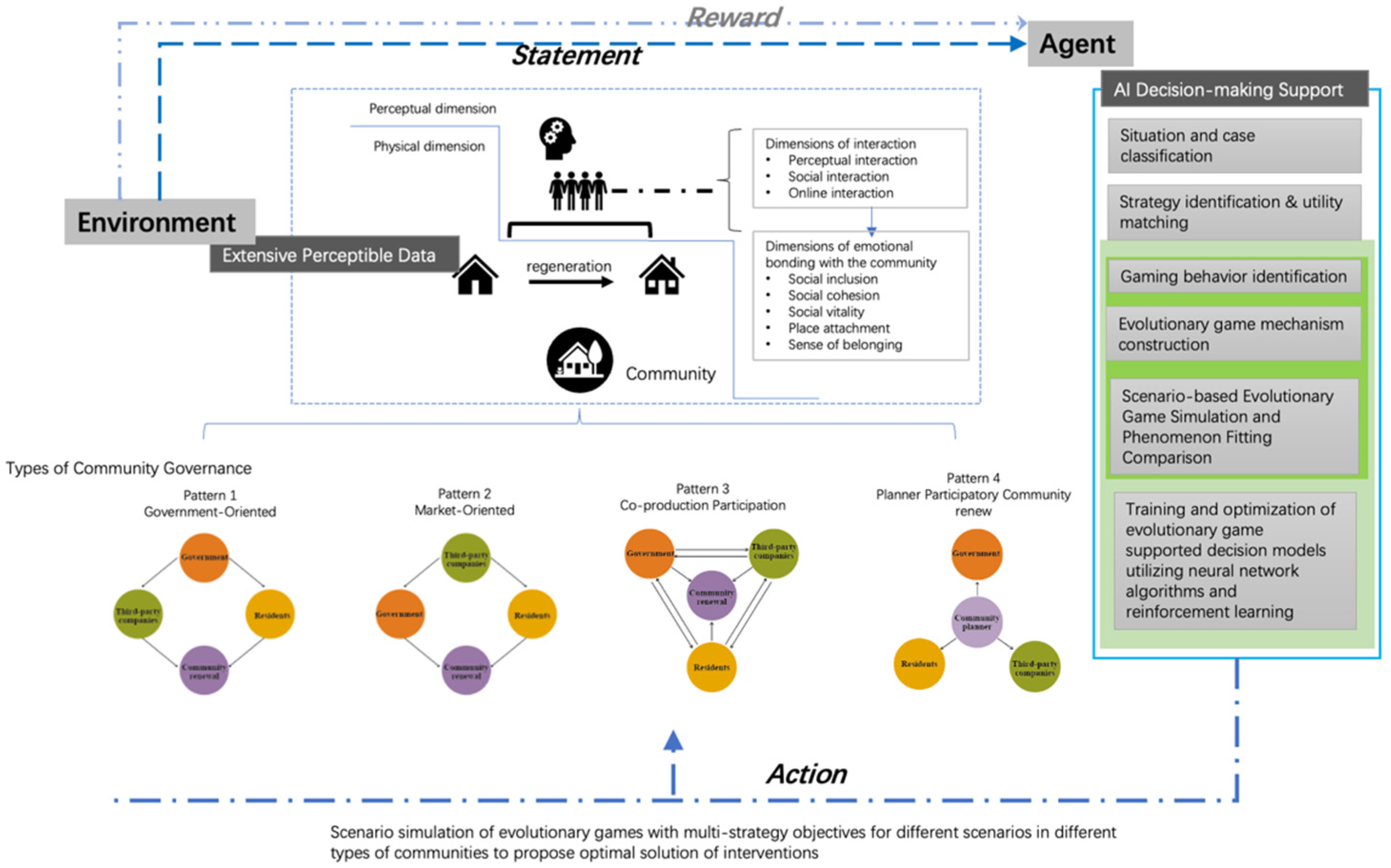
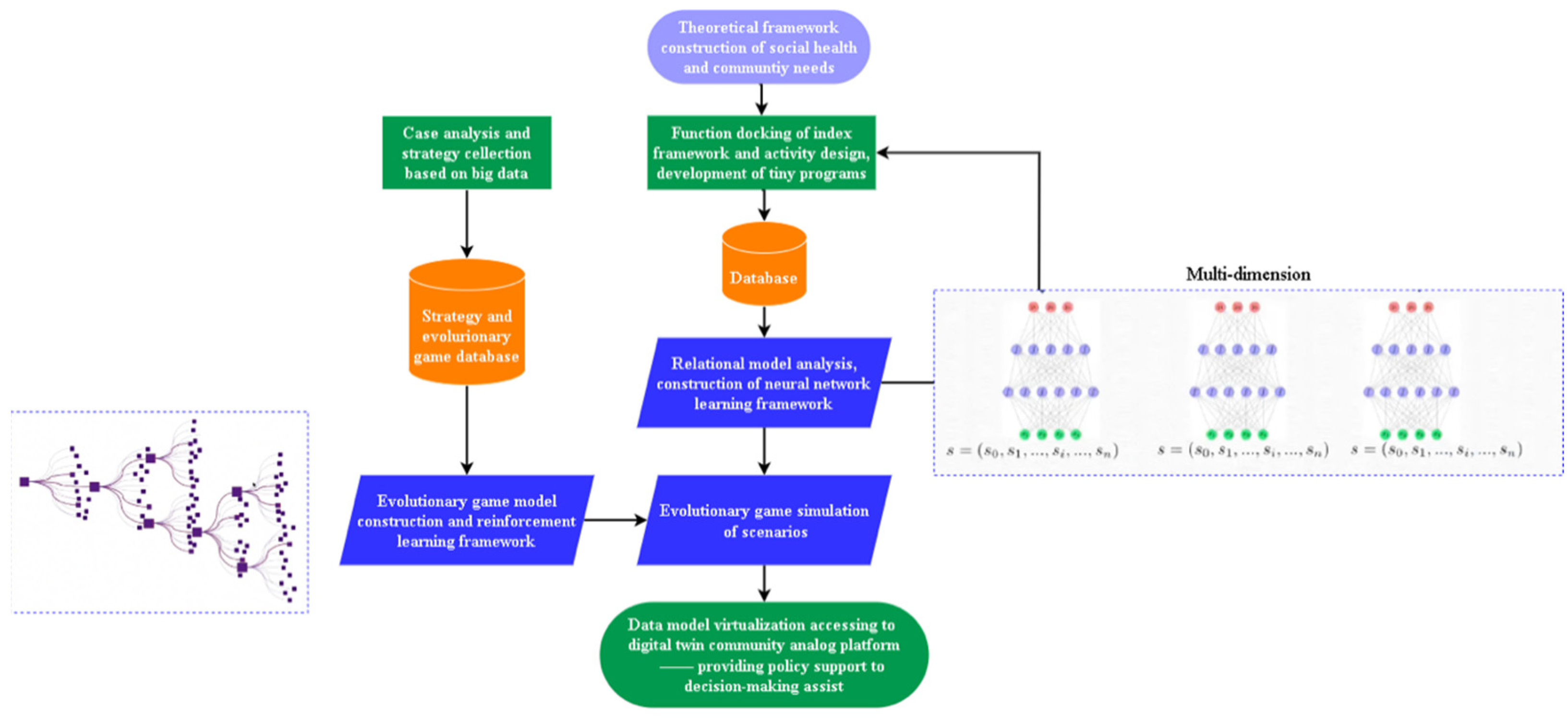
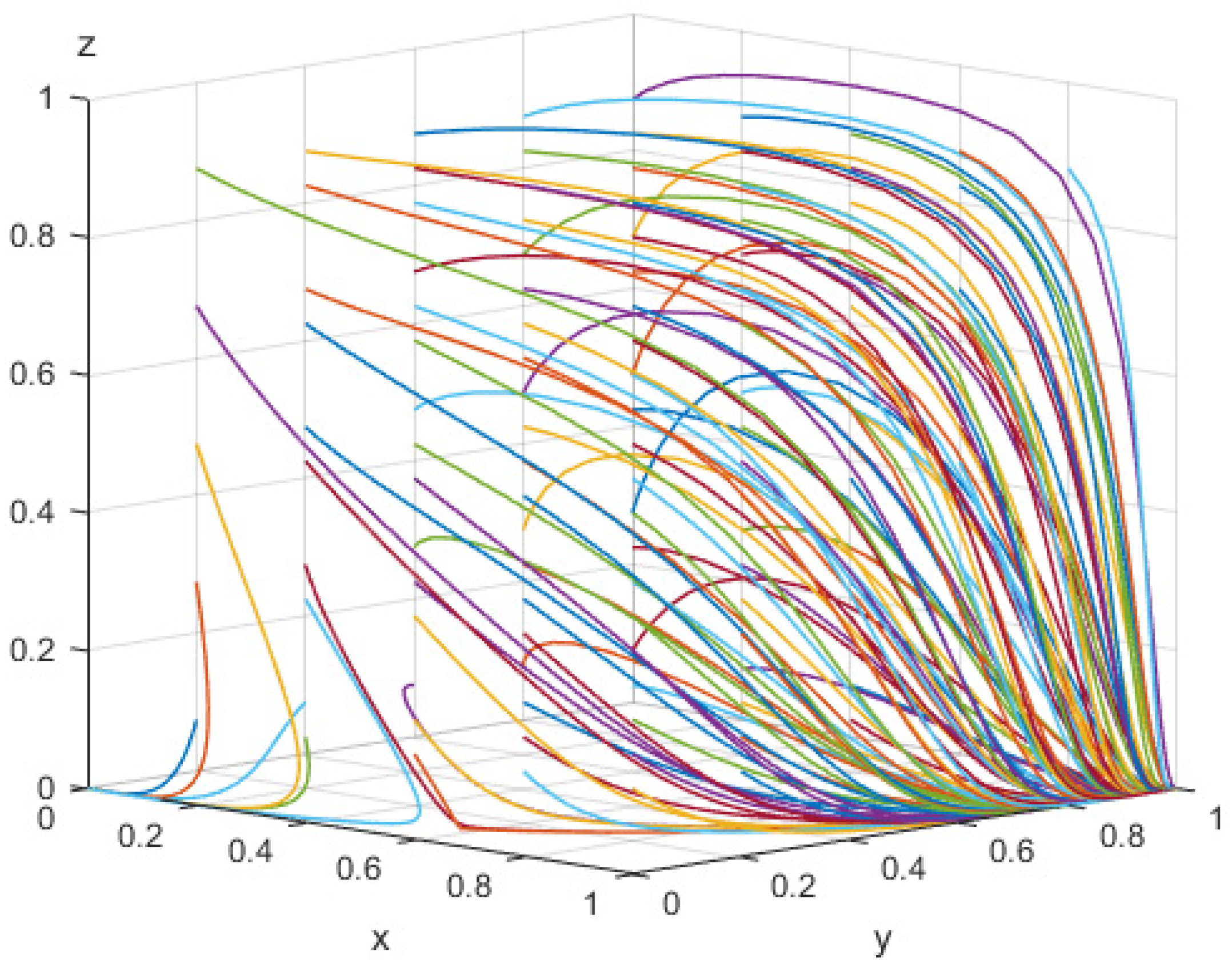
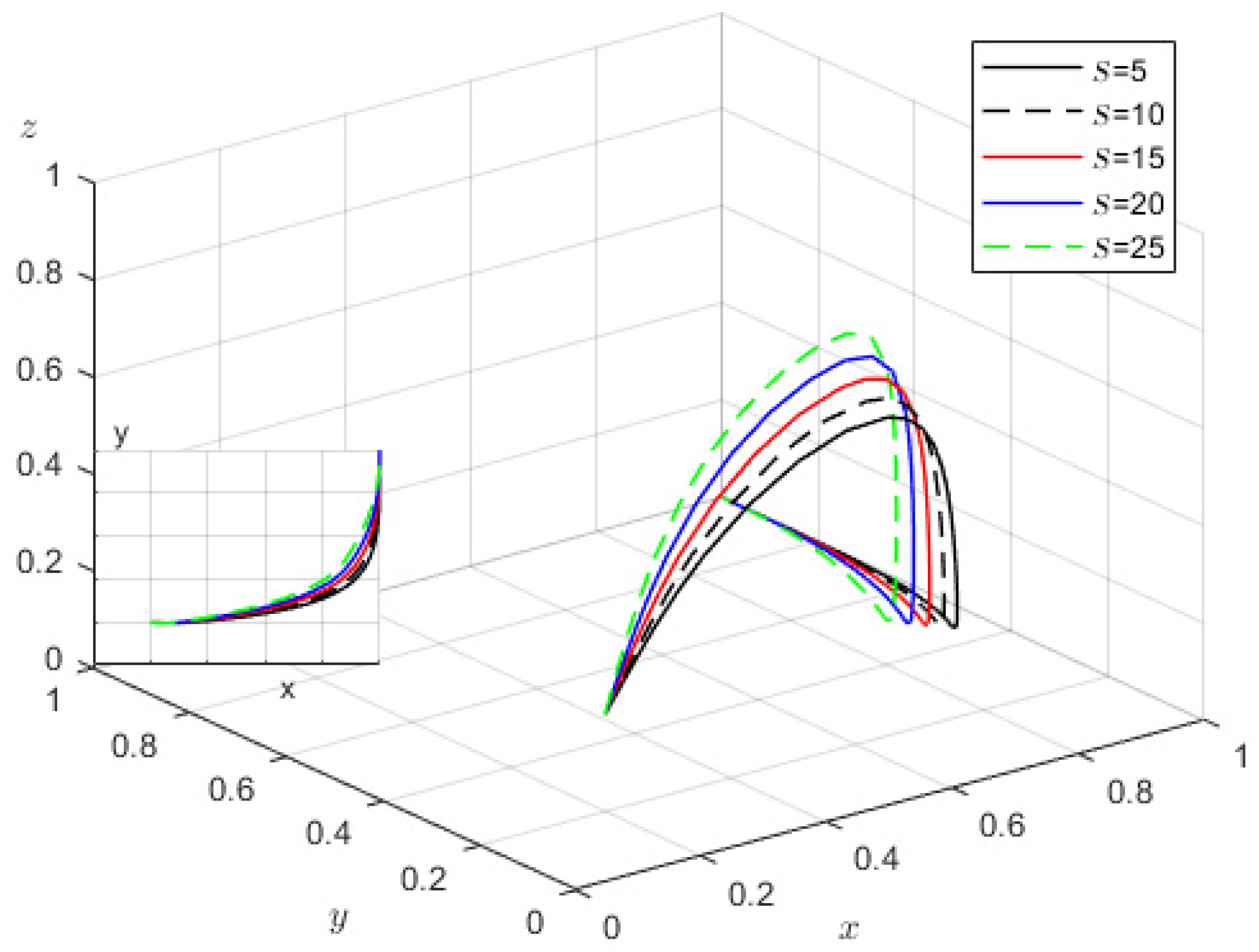
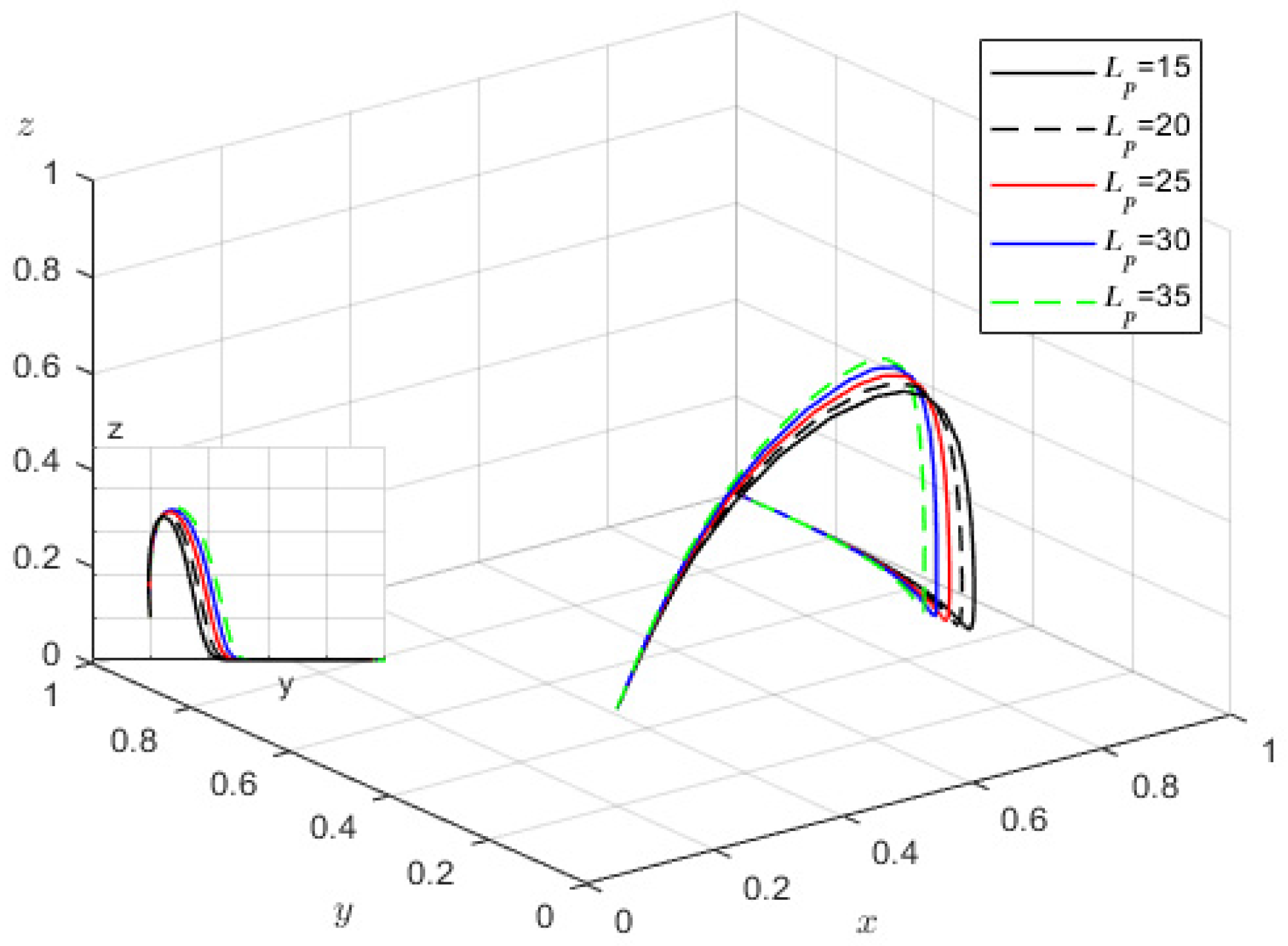

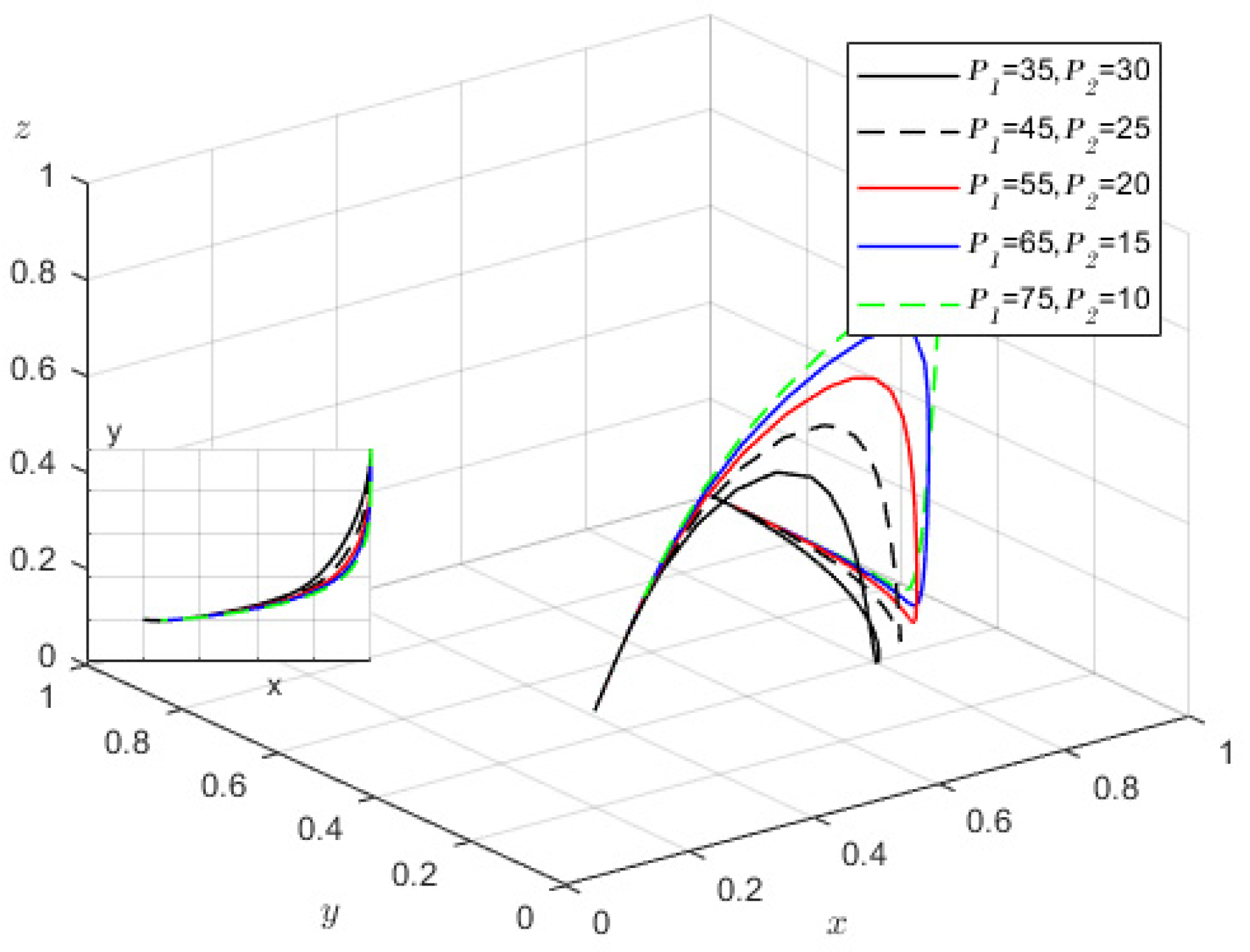
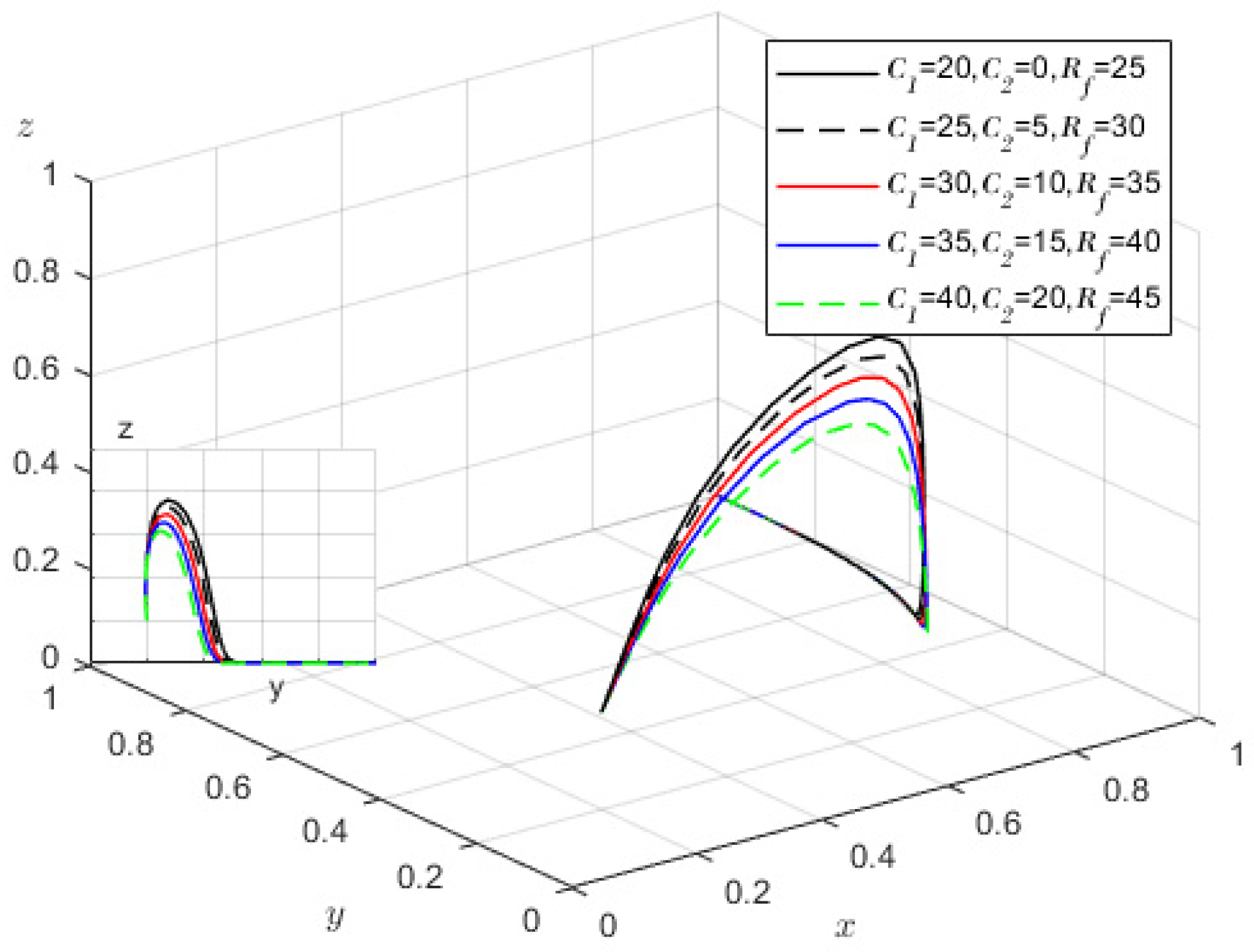
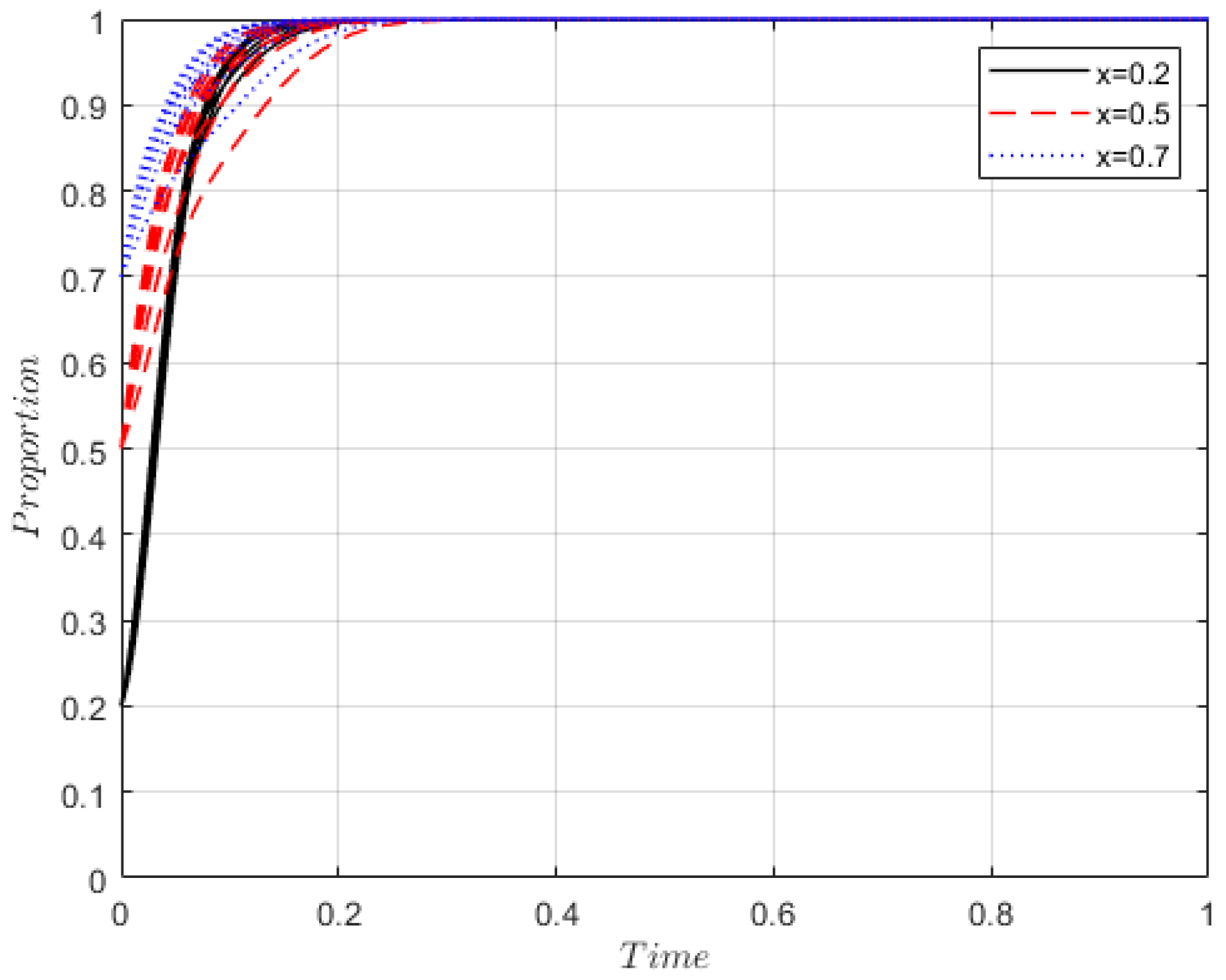
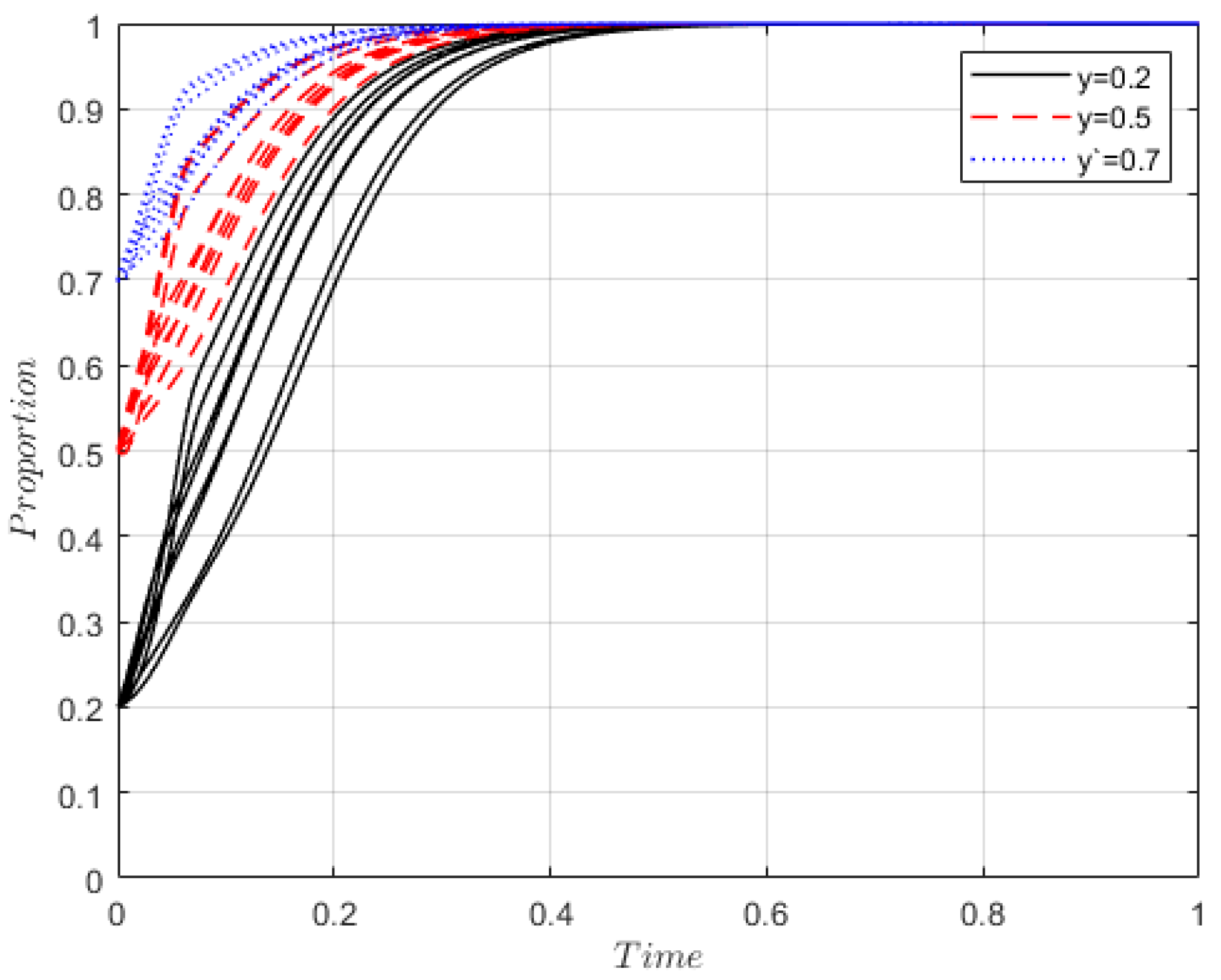

| Parameter | Meaning | Remarks |
|---|---|---|
| S | Subsidies given to businesses and residents when the government is aggressive in governance | |
| Costs paid by the government when it adopts a proactive strategy | ||
| M | Penalties for negative participation of enterprises when the government is active in governance | |
| The percentage of cost saved by the government and residents’ income increased when community planners are involved in the project | ||
| The proportion of cost savings for the government and enterprises when the government and enterprises cooperate | ||
| Direct and indirect benefits such as economic and prestige gained by government departments when community governance is progressed | ||
| Loss of prestige due to poor living experience of residents when the government is passive | ||
| Costs to businesses when they actively participate | ||
| The cost of active participation by the government and passive participation by enterprises | ||
| The basic benefits of public services provided by market players | ||
| Additional economic benefits for each market player due to increased reputation in the industry | ||
| Indirect benefits to residents in terms of physical, mental, and quality of life improvement | ||
| Compensation costs for residents who suffer as a result of the negative participation strategy of market players | ||
| The benefit loss of residents when the community renewal effect is poor |
| Strategy Selection | Earnings | ||||
|---|---|---|---|---|---|
| Government | Companies | Residents | Government | Companies | Residents |
| C | C | C | |||
| C | C | D | |||
| C | D | C | |||
| C | D | D | |||
| D | C | C | |||
| D | C | D | |||
| D | D | C | |||
| D | D | D | |||
| Equilibrium Point | Eigenvalues of the Jacobian Matrix | Symbol of the Real Part | Stability Conclusion | ||
|---|---|---|---|---|---|
| ESS | |||||
| Instability point | |||||
| Instability point | |||||
| Instability point | |||||
| ESS | |||||
| Instability point | |||||
| Instability point | |||||
| Instability point | |||||
| 0 | 0 | Instability point | |||
| 0 | Uncertain point | ||||
| Uncertain point | |||||
| Parameter | Initial Value | Remarks |
|---|---|---|
| 20 | ||
| 30 | ||
| 15 | ||
| 0.2 | ||
| 0.15 | ||
| 55 | ||
| 20 | ||
| 30 | ||
| 10 | ||
| 35 | ||
| 20 | ||
| 70 | ||
| 25 | ||
| 30 |
Disclaimer/Publisher’s Note: The statements, opinions and data contained in all publications are solely those of the individual author(s) and contributor(s) and not of MDPI and/or the editor(s). MDPI and/or the editor(s) disclaim responsibility for any injury to people or property resulting from any ideas, methods, instructions or products referred to in the content. |
© 2023 by the authors. Licensee MDPI, Basel, Switzerland. This article is an open access article distributed under the terms and conditions of the Creative Commons Attribution (CC BY) license (https://creativecommons.org/licenses/by/4.0/).
Share and Cite
Zhou, Y.; Lei, H.; Zhang, X.; Wang, S.; Xu, Y.; Li, C.; Zhang, J. Using the Dual Concept of Evolutionary Game and Reinforcement Learning in Support of Decision-Making Process of Community Regeneration—Case Study in Shanghai. Buildings 2023, 13, 175. https://doi.org/10.3390/buildings13010175
Zhou Y, Lei H, Zhang X, Wang S, Xu Y, Li C, Zhang J. Using the Dual Concept of Evolutionary Game and Reinforcement Learning in Support of Decision-Making Process of Community Regeneration—Case Study in Shanghai. Buildings. 2023; 13(1):175. https://doi.org/10.3390/buildings13010175
Chicago/Turabian StyleZhou, Youmei, Hao Lei, Xiyu Zhang, Shan Wang, Yingying Xu, Chao Li, and Jie Zhang. 2023. "Using the Dual Concept of Evolutionary Game and Reinforcement Learning in Support of Decision-Making Process of Community Regeneration—Case Study in Shanghai" Buildings 13, no. 1: 175. https://doi.org/10.3390/buildings13010175
APA StyleZhou, Y., Lei, H., Zhang, X., Wang, S., Xu, Y., Li, C., & Zhang, J. (2023). Using the Dual Concept of Evolutionary Game and Reinforcement Learning in Support of Decision-Making Process of Community Regeneration—Case Study in Shanghai. Buildings, 13(1), 175. https://doi.org/10.3390/buildings13010175





